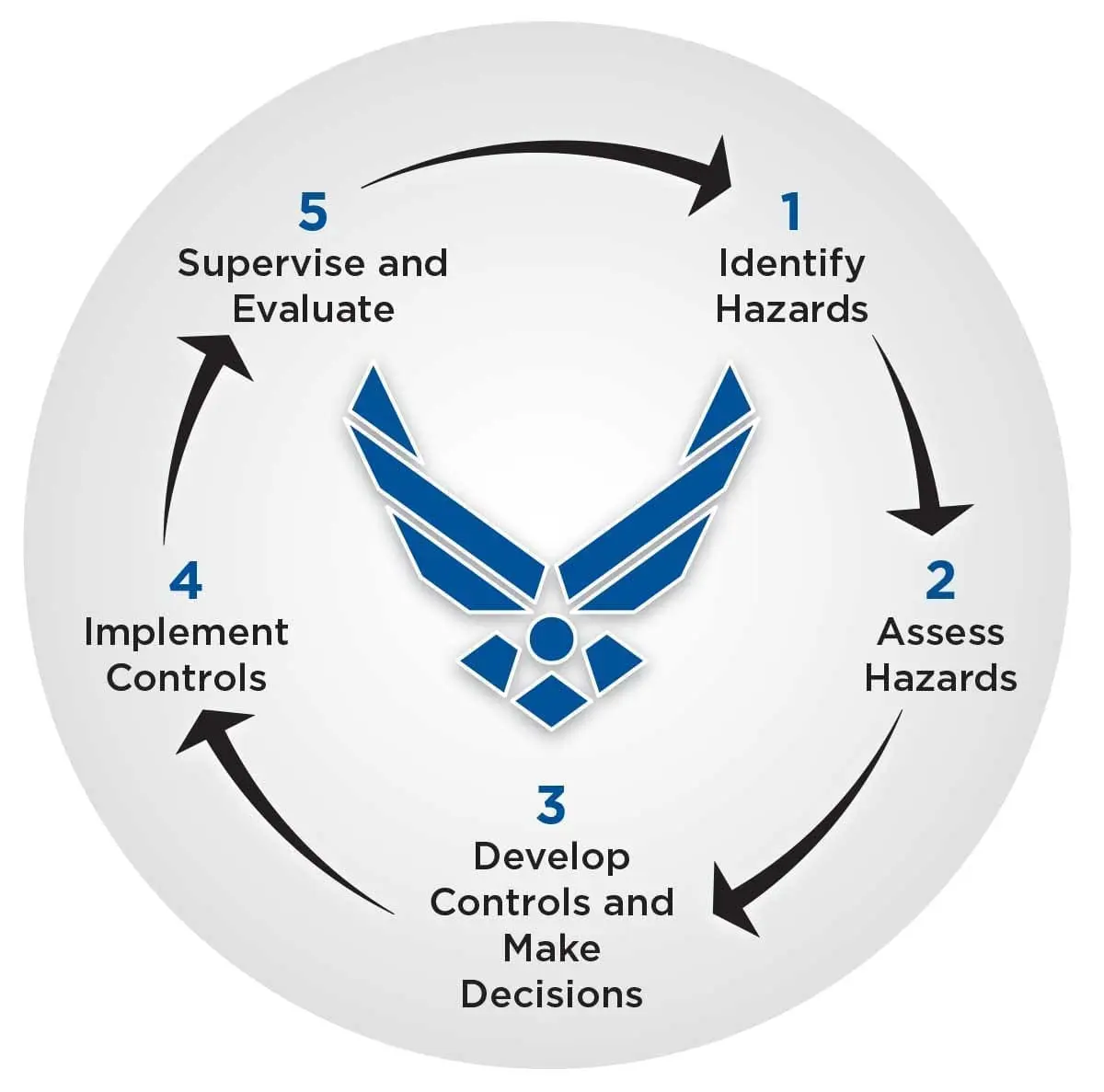Safety Is a Risk Management Program
By MR. KEVIN SLUSS, CSP, AMC RISK MANAGEMENT PROCESS MANAGER
Is safety a risk management program? Although many of you may have thought the opposite was true, the answer is “Yes,†according to an excellent presentation given by Eric Brenkert at the Air Force Academy earlier this year.1 Essentially, everyone’s job is due to some type of risk management. We have legal risk, so we have a Staff Judge Advocate to manage it. We have operations risk, logistics risk, medical risk, and more—making it necessary for many people to have jobs and training in those areas to manage that risk. No matter how well you know the risk management process—the four tenets, the four goals, the five essential concepts, the four “does nots,†the four principles, the two levels, the five steps (hopefully, you remember the five steps from the fundamentals video) it does not help if you do not use it.
Can you find ways to make risk management part of your daily job? We all accept risk, every day, in all our activities, but perhaps we are not aware of doing so. For leaders, the question should be, “Is risk being accepted at the appropriate level?†Are junior people making risk decisions for the sake of accomplishing the mission without the insight from higher levels of leadership or the resources those people can provide?
No one can remove all risk from activities; however, practicing sound risk management can instill confidence when one learns the skill of weighing benefits against potential losses. Repeating the process improves decision-making skills. Often, presenting options or courses of action to leaders, detailing the risks involved for each, provides leadership with more informed decision-making abilities.
Some of the best practices I have seen in Air Mobility Command (AMC) units include the following: Commanders are involved, either by regular notifications or by signing the deliberate risk assessment worksheets. All or most worksheets are reviewed (not written) by the wing risk manager or alternate for thorough hazard analysis and effective controls. The wing risk manager keeps copies of the deliberate risk assessments as examples. The wing commander has established a general policy on risk management assessments that directs group-level approval for medium-risk activities or when the event involves multiple squadrons and wing-level approval for high or extremely high risk. Risk assessments are completed by a process expert, typically the front-line supervisor.
Using tools in the high-risk activities program can reduce risk to personnel, especially in off-duty activities.
Some examples of these activities include flying civil aircraft, hang gliding, skydiving, parasailing, white-water rafting, motorcycle and auto racing, scuba diving, bungee jumping, bronco and bull riding, and extreme sports. Commanders should interview participants as they identify themselves and review the training in the activities to include safety procedures and personal protective equipment. AMC provides templates to aid and document discussion on our Risk Management page on the Air Force portal.2
1 Mr. Brenkert’s presentation can be found at: https: //www.my.af.mil/gcss-af/USAF/ content/usafarm.
2 AMC Risk Management page can be found at https://www.my.af.mil/gcss-af/USAF/ content/AMCRM.


